Post pandemic exodus from cities highlights inadequacies of the quintessential English country village
Post pandemic exodus from cities highlights inadequacies of the quintessential English country village
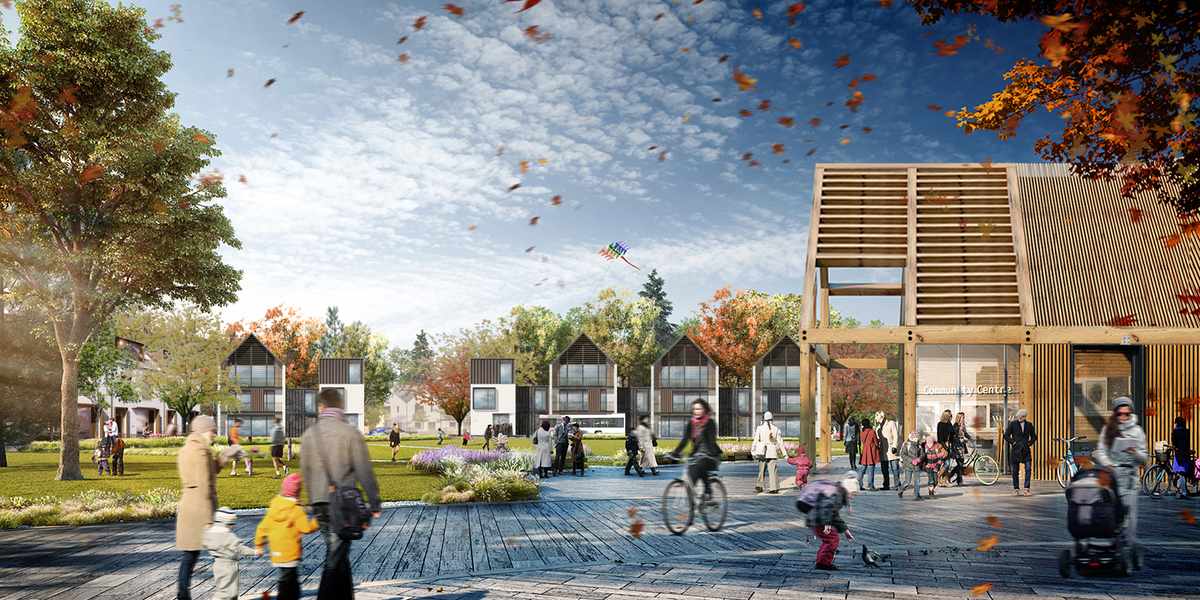
With the impact of the pandemic leading to a 126% increase in people considering properties in village locations, a new report by global architects Broadway Malyan seeks to address the environmental, economic and social issues facing rural communities of the future in the UK.
Reimagined Village, released last week, highlights the urgent need for a rethink amongst planners, developers and local authorities to stop villages of the future becoming unsustainable and dormitory settlements that are simply not fit for purpose.
Taking inspiration from places such as Vauban in Freiburg, Germany, Broadway Malyan sees the ‘village of the future’ as an effective antidote to the housing crisis, creating environmentally, socially, economically and culturally sustainable places for people to live, work and play in England and beyond.
Although set in beautiful environments, many idyllic English country villages are not as environmentally friendly or economically accessible as their city counterparts. Current challenges facing villages are:
- Expensive properties
- Lack of employment (due to downturn in local industries)
- Absence of adequate educational facilities (village school closures)
- Lack of amenities forcing people to drive to shops, healthcare providers, restaurants etc.
- Unreliable internet connectivity
- Non-eco-friendly housing
Reimagined Village tackles these issues and more head on to ensure the future village is a valid economic force in its own right – connected, smart, and green, housing a diverse and healthy community of residents and businesses in a unique, attractive and genuinely sustainable setting.
Jeff Nottage, Director at Broadway Malyan and author of Reimagined Village said:
England’s landscape has been defined by the quintessential country village for hundreds of years, but although pretty and quaint, we cannot ignore that they are no longer fit for purpose economically, socially or environmentally.
“Our report sets out what we believe will be the key components of a new reimagined village of the future. We want to start a national conversation about the opportunities and significant challenges of realising such a vision and ensure that, beyond the pandemic, we are addressing the housing crisis in logical and sustainable way, creating diverse multicultural, transgenerational and economically diverse communities.”
The report centres on 7 key elements to the village of the future:
Scale and Size
The village needs to be a place that has a real sense of community with its centre easily accessible by both foot and cycle. It also needs to have an adequate population to support its local facilities and ensure that it remains viable. The report recommends that:
- Any new village has at least 1,500 new homes (this is the minimum capacity normally required to sustain a two-form entry primary school – one of the facilities vital to creating a self-sufficient settlement).
- Primary school education is provided within the village.
- The village centre should be within a 10-minute walk of all homes.
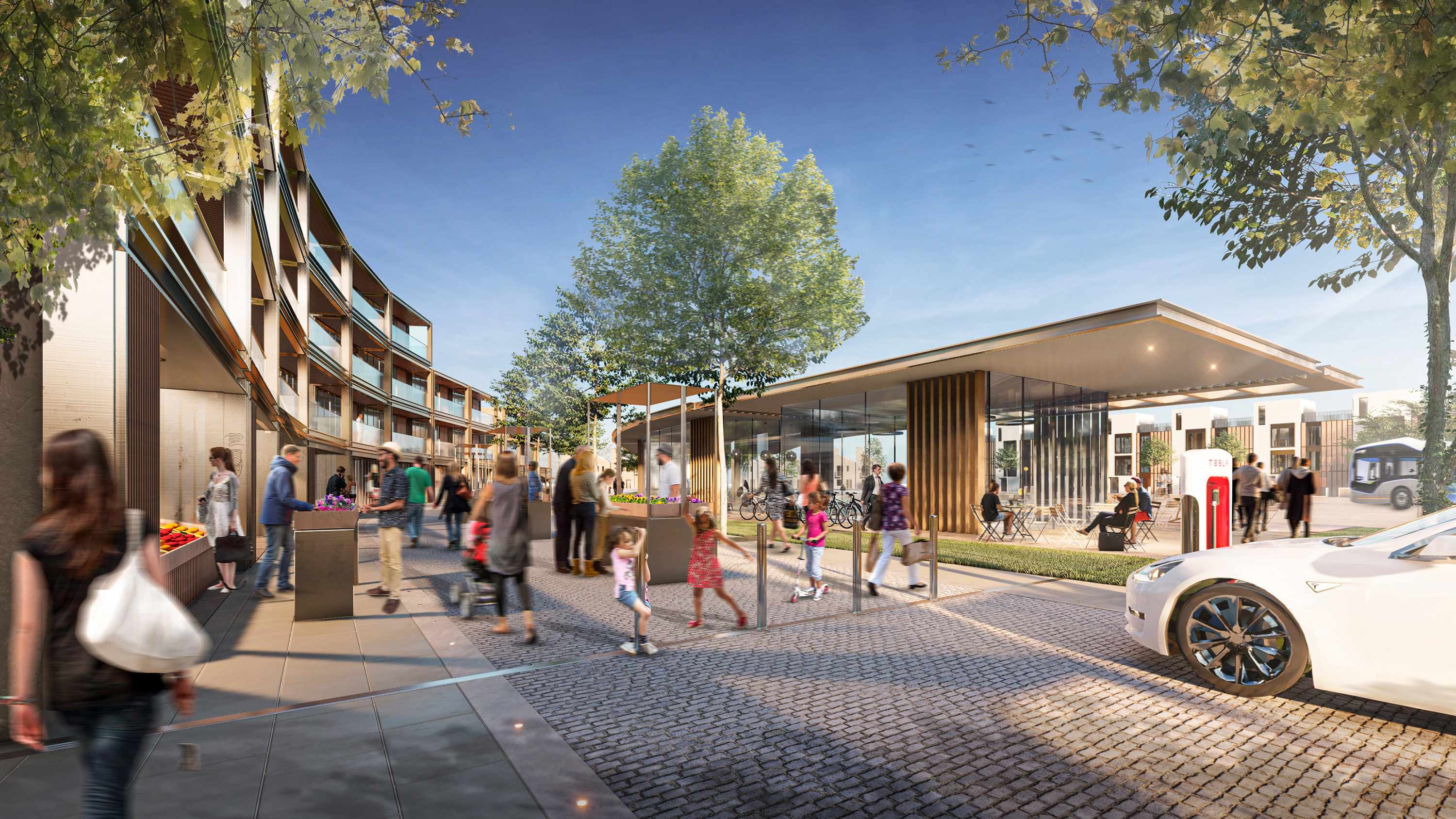
The Village Economy
Most UK villages were born out of industry, but as jobs in traditional industries have fallen, growing numbers of residents have moved to larger towns and cities, enticed by higher-paying, knowledge-based careers. The report recommends:
- Any masterplan must include co-working spaces to accommodate flexible working within the village itself.
- Integrating high-quality digital connectivity to empower remote working.
- The creation and improvement of sustainable transport links to neighbouring cities and towns to cut down the need for car travel.
- Design that is futureproofed, diverse and agile to accommodate future unforeseen market transformations.
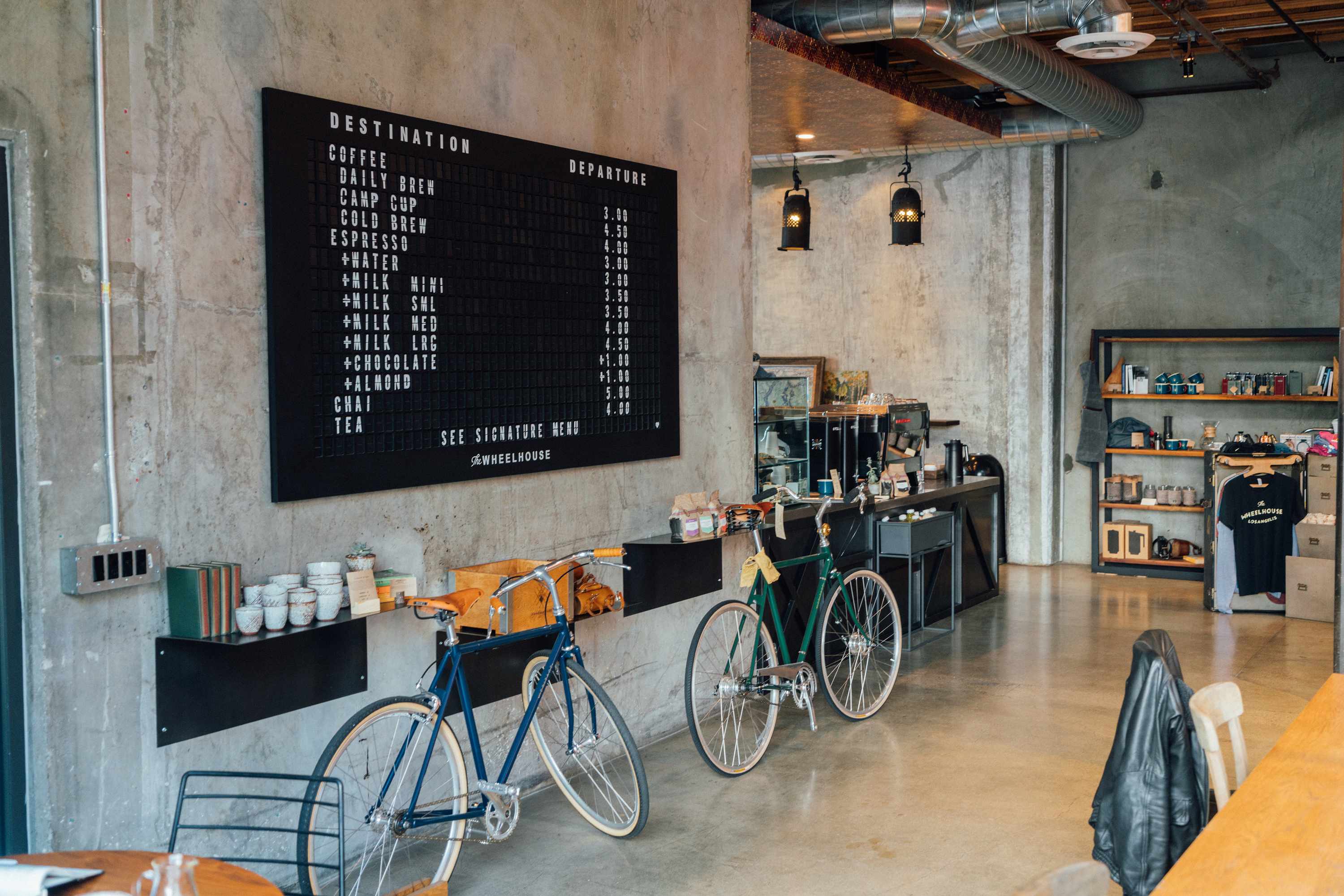
The Village Heart
The reimagined village centre must be more than just a string of single-use buildings, as villages have traditionally had in the past. The key is to develop a village heart early on to prevent unsustainable travel habits, by residents, to amenities outside of the village. The report recommends:
- Creating pop-up features, temporary facilities and ‘meanwhile’ building uses from day one to establish an immediate community focal point.
- Providing flexible, multi-functional buildings and spaces that serve as a variety of functions for all ages and interests, such as a performance theatre, art gallery, education centre or polling station.
- Initiating a community-run shop (success of community-run stores is 95% compared with average small business success rate of 46%).
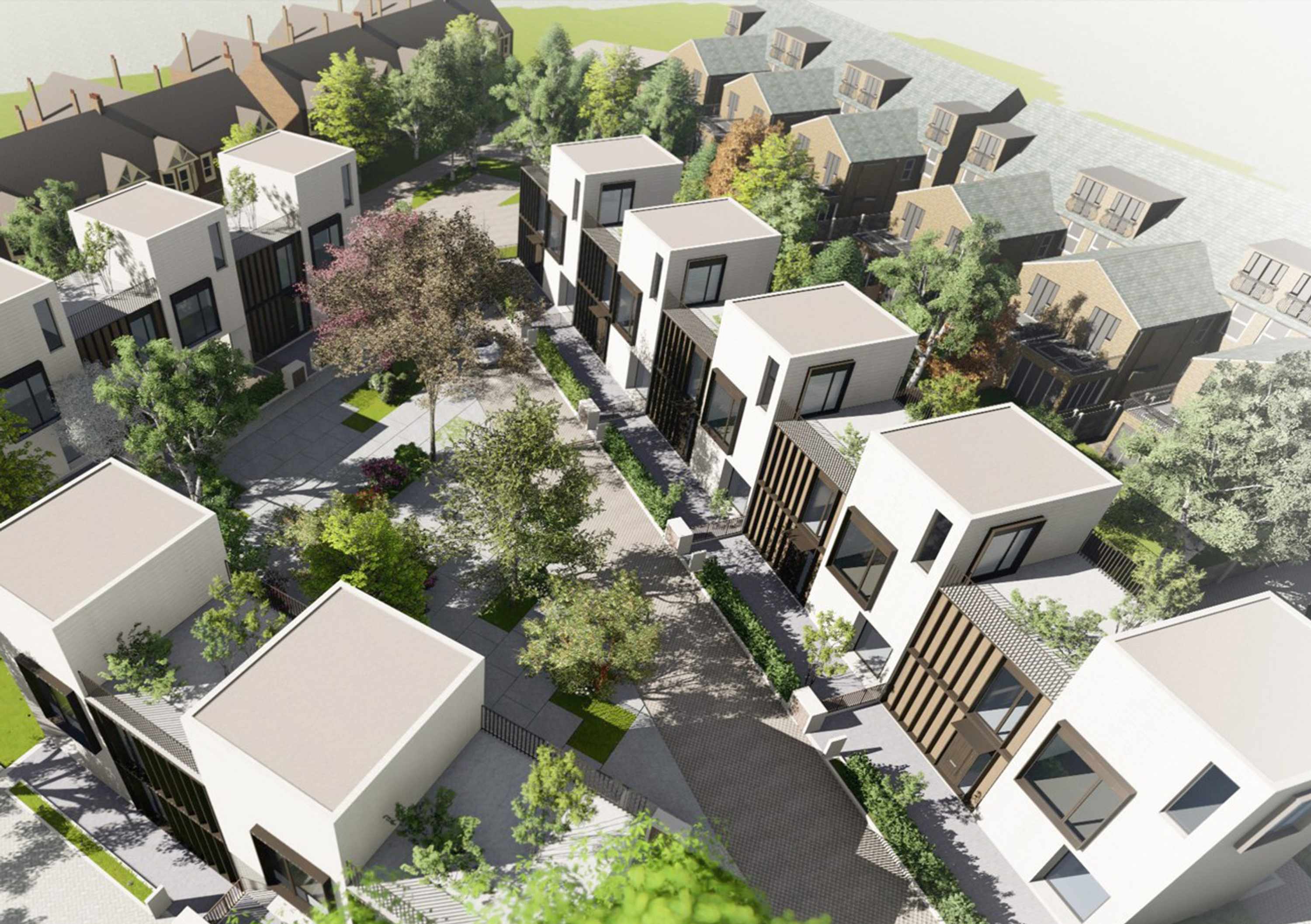
New Village Housing
High property prices mean that villages remain unaffordable to many and their low-density design is at odds with the UK’s current housing goals. Today’s villages are also experiencing growing.
levels of reported social isolation. The report explores housing within a reimagined village that is more suited to future living and more aligned with modern methods of construction, potentially offering affordable, flexible and sustainable typologies that appeal to a broader mix of people and actively facilitate social integration. The report recommends:
- Varying tenures and typologies to establish a diverse, sociable and integrated community.
- Embracing flexible density and buildings.
- Explore striking but sustainable new housing design.
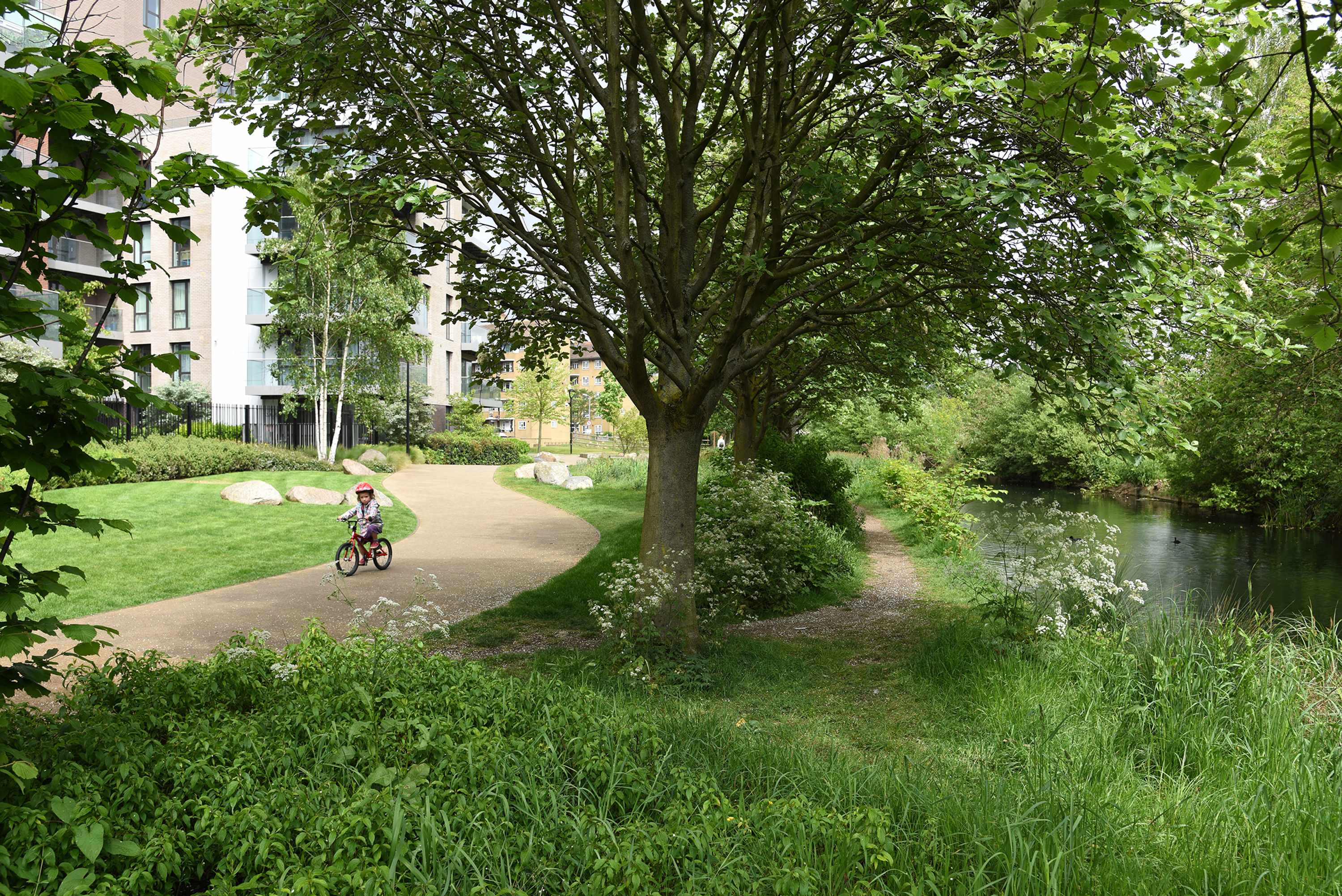
The Mobile Village
Currently, village residents tend to be highly reliant on cars for access to employment, services and education. However, by leveraging benefits of new technology and adopting a fresh design approach, the report details how reimagined villages could reduce their historic reliance on private vehicles and become the forerunner for mobility innovations. The report recommends:
- Embracing the concept of shared mobility.
- Planning for electric and autonomous vehicles.
- Introducing a mobility hub that serves as a focal point for the administration of the travel plan and the shared transport options within the village.
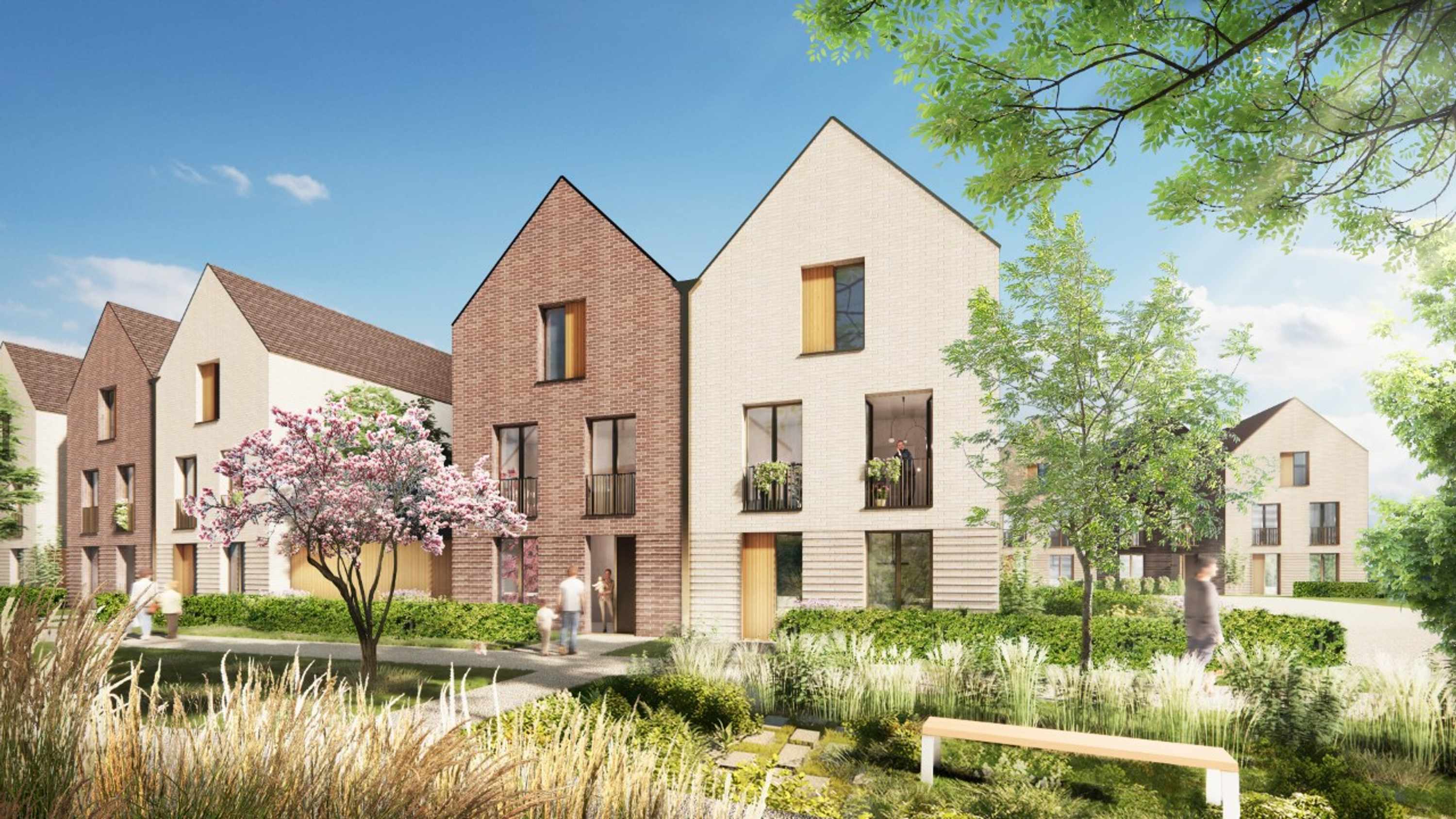
The Green Village
Many people move to villages to feel more connected to the outdoors. While new village developments should still strive to fulfil these desires, green space and infrastructure should not be added arbitrarily to simply conform to a traditional village stereotype. The report advocates access to more functional, purposeful and interesting spaces that raise happiness and community spirit while reducing environmental impact. The report recommends:
- Providing routes and spaces that bring safety, comfort and enjoyment for a variety of purposes.
- Creating opportunities for local food sourcing.
- Futureproofing the public realm such as advanced outdoor furniture that is more convenient, seamless and environmentally friendly.
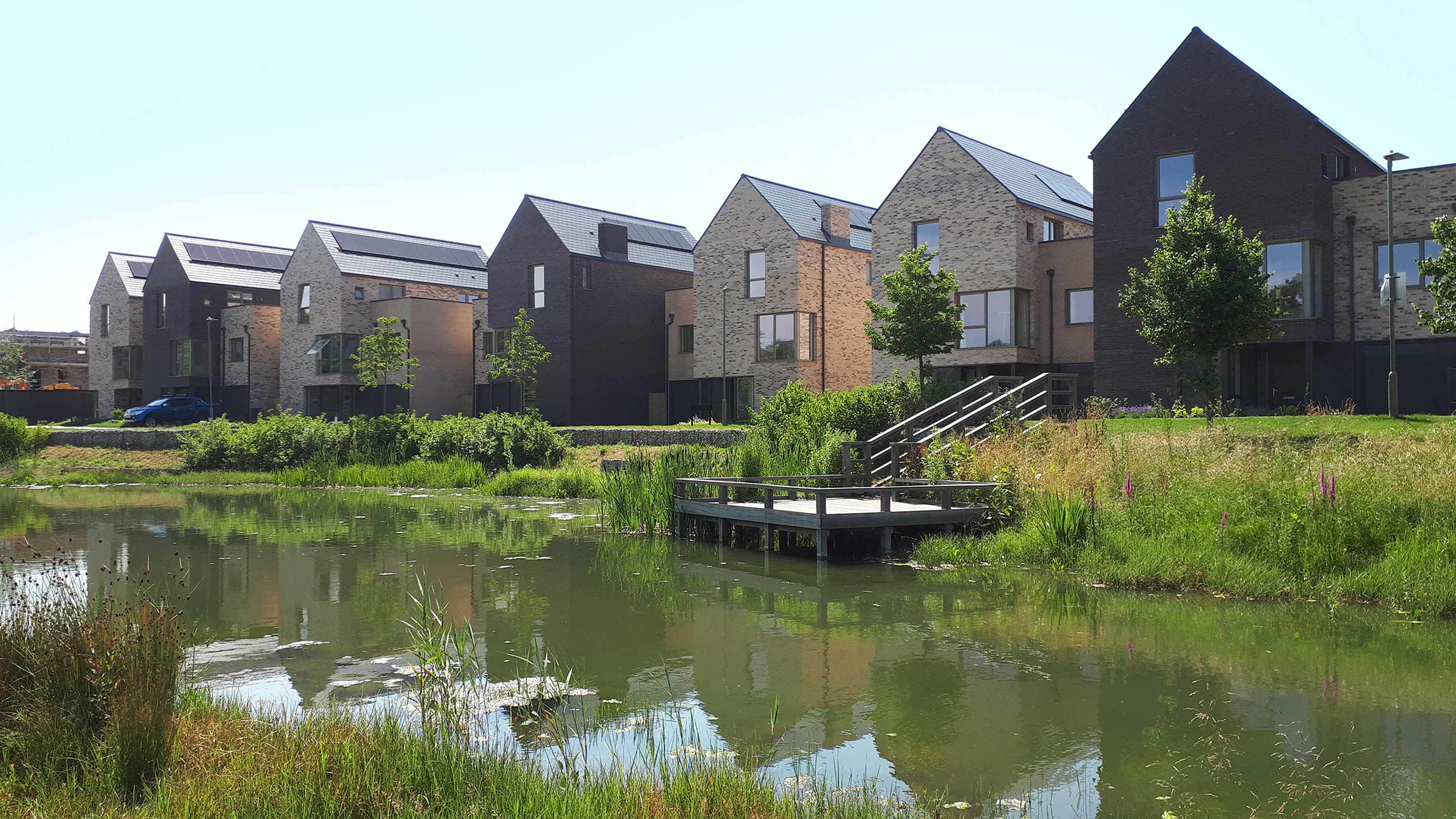
The Resilient Village
With buildings accounting for 40% of emissions and the UK government now bound by law to reach net zero carbon by 2050, the villages of tomorrow will have to be designed and planned with climate resilience at front of mind to minimise their environmental impact and maximise their sustainability. The report recommends:
- Creating fabric-first homes and buildings.
- Utilising sustainable forms of energy such as photovoltaics, ground and air source heat pumps and hydrogen power.
- Embracing and nurturing the local village ecology.
- Encouraging hyper-local, reuse and recycling as a community lifestyle.
In the last decade, fewer homes have been delivered in the UK than in any period since the Second World War. The country is currently facing the issue of accounting for consecutively missed housing targets while hitting the extremely challenging ones that lay ahead, all amid uncertain conditions; the need to create great places for people to live, the mounting pressure of the climate emergency and the aftermath of the COVID-19 global pandemic.
Whilst appreciating that there are several ways in which to deliver new housing, Broadway Malyan believes that, if reimagined, new village communities could provide the impetus needed to regain momentum.
Broadway Malyan is currently working on several projects that have allowed the themes explored in Reimagined Village to be put into practice. Design proposals for the Dunton Gardens Garden Village in Brentwood, Essex, focus on creating a new community that can deliver up to 4,000 new homes, with open public green spaces, and vibrant community facilities.
In Surrey, the proposals for Longcross Garden Village include the delivery of 1,700 homes, alongside a significant investment in new green infrastructure and community facilities, for new and existing surrounding residents to enjoy.
Broadway Malyan worked on the Reimagined Village report with contributions from economic development company Hatch, engineering consultancy, Cundall and global business consultancy, Steer.
For more information and to download a copy of Reimagined Village click here.


